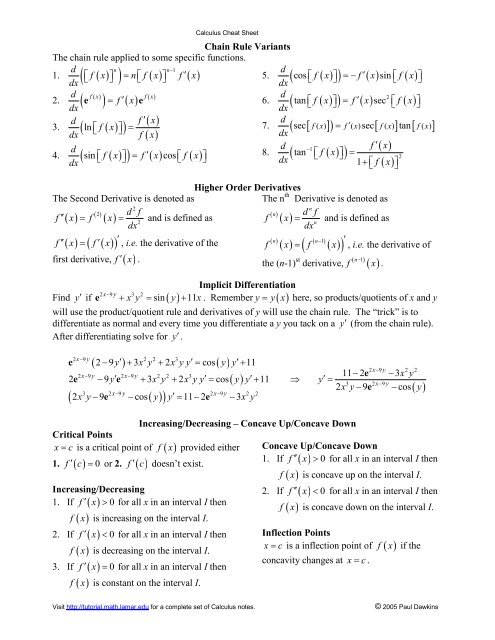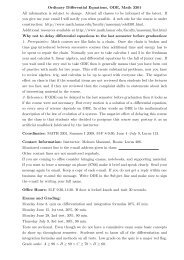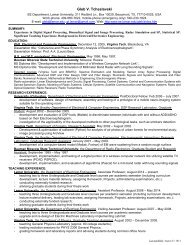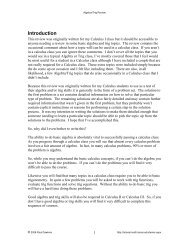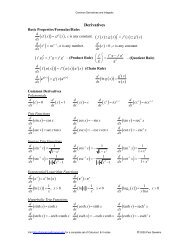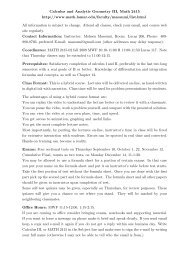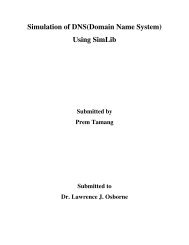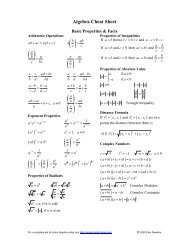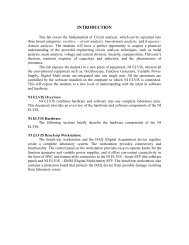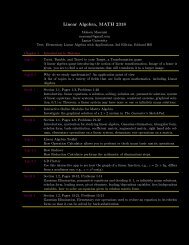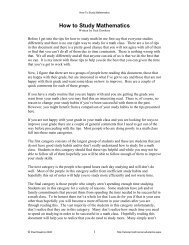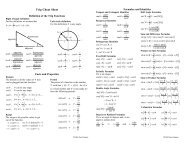Calculus Cheat Sheet Derivatives - Pauls Online Math Notes
Calculus Cheat Sheet Derivatives - Pauls Online Math Notes
Calculus Cheat Sheet Derivatives - Pauls Online Math Notes
- No tags were found...
You also want an ePaper? Increase the reach of your titles
YUMPU automatically turns print PDFs into web optimized ePapers that Google loves.
<strong>Calculus</strong> <strong>Cheat</strong> <strong>Sheet</strong>Chain Rule VariantsThe chain rule applied to some specific functions.dnn-1d1. ( éf ( x)ù ) = néf ( x) ù f¢( x)dxë û ë û5. ( coséf ( x)) f ( x) sin f ( x)dxë ùû =- ¢ éë ùûd f ( x)f ( x)d22. ( e ) = f¢( x)e6. ( tanéf ( x)) f ( x) sec f ( x)dxdxë ùû = ¢ éë ùûdf¢( x)d3. ( ln éf( x)ù)=7. secdxë û[ ] = ¢ sec tanf ( x)dxdd 1f ( x)4. ( sinéf ( x)ù) = f¢( x) cos éf ( x)ù8. ( tan- éf( x))¢2dxë û ë û dxë ùû=1+éëf ( x)ùû( f ( x) ) f ( x) [ f ( x) ] [ f ( x)]Higher Order <strong>Derivatives</strong>The Second Derivative is denoted asThe n th Derivative is denoted as2n( 2( ) ) d f( nf¢¢ x = f ( x)= and is defined as) d ff2( x)= and is defined asndxdxf¢¢ ( x) = f¢( x )¢nn- 1, i.e. the derivative of the¢f x = f x , i.e. the derivative of( )¢ .first derivative, f ( x)( )( )(()( ))the (n-1) st derivative, f( n-1)( x)Implicit Differentiation+ xy = sin y + 11xy = y x here, so products/quotients of x and y2x-9y3 2Find y¢ if e ( ) . Remember ( )will use the product/quotient rule and derivatives of y will use the chain rule. The “trick” is todifferentiate as normal and every time you differentiate a y you tack on a y¢ (from the chain rule).After differentiating solve for y¢.e( y¢ )exy xyy¢ ( y)y¢( )-x- ey- ( ) ¢ = -x-ey-2x-9y2 2 32- 9 + 3 + 2 = cos + 11- y¢ + xy + xyy¢ = y y¢ + Þ y¢=2x-9y 2x-9y2 2 32e9 3 2 cos 11( )2xy 9 cos y y 11 2 3xy3 2 9 2 9 2 2Critical Pointsx c= is a critical point of f ( )1. f¢ ( c) = 0 or 2. f ( c)Increasing/Decreasing – Concave Up/Concave Down¢ doesn’t exist.x provided eitherIncreasing/Decreasing1. If f¢ ( x) > 0 for all x in an interval I thenf ( x ) is increasing on the interval I.¢ < for all x in an interval I then2. If f ( x) 0f ( x ) is decreasing on the interval I.¢ = for all x in an interval I then3. If f ( x) 0f ( x ) is constant on the interval I..2x-9y2 211-2e-3xy3 2x-9y2xy-9e-cos( y)Concave Up/Concave Down1. If f¢¢ ( x) > 0 for all x in an interval I thenf ( x ) is concave up on the interval I.¢¢ < for all x in an interval I then2. If f ( x) 0f ( x ) is concave down on the interval I.Inflection Pointsx c= is a inflection point of f ( )concavity changes at x= c.x if theVisit http://tutorial.math.lamar.edu for a complete set of <strong>Calculus</strong> notes.© 2005 Paul Dawkins


